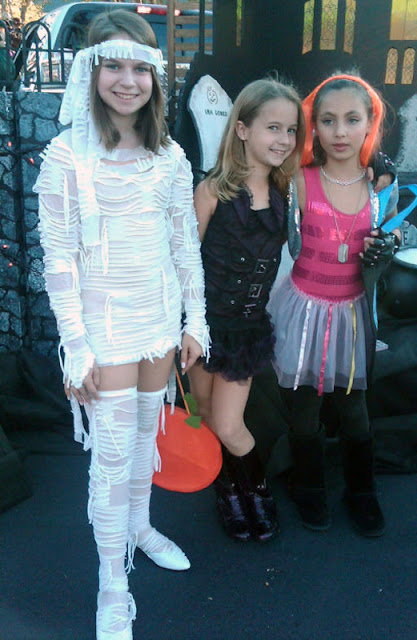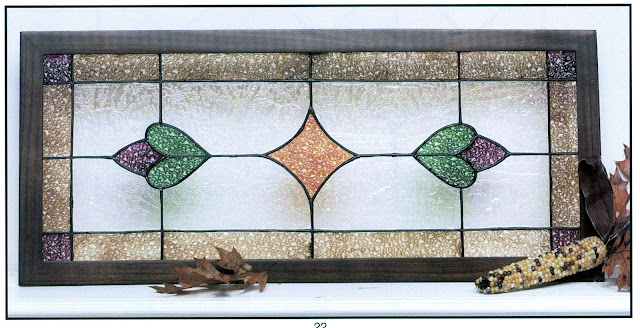 Our reader, Laurie Morris, from South Carolina, was one of the first people to respond to Gallery Glass Class. She and I have exchanged a number of emails--sharing about our respective projects. Today she is letting me share one of them with you. Here, in parts, is her explanation of the project.
Our reader, Laurie Morris, from South Carolina, was one of the first people to respond to Gallery Glass Class. She and I have exchanged a number of emails--sharing about our respective projects. Today she is letting me share one of them with you. Here, in parts, is her explanation of the project.
Laurie said, "Remember when we first started chatting I told you I was planning to do a window for my Bible study room? Well I finally got over the material hump (odd size window) and started the project. Since I couldn't find styrene in the entire window size (plus the size is big enough that I wasn't sure how to mount it...industrial windows), I decided to divide the project into (4) sections. The church window actually has double paned windows with dividers on the inside of the panes, so naturally the window feels like four sections anyway. I searched the Internet for patterns and ended up drawing my own based on a few I had seen. The grapes are from the GG suncatcher book. Then I applied the GG. I was still pondering how to hang the project. The deal with the church was "the decoration had to be temporary". I couldn't use the method you suggested (glazing gun) so I fired up the trusty Internet. The results, "static cling". You know those clings you buy at the holidays printed on vinyl, that principal. Now a more complicated search where to find the vinyl. You can buy printer friendly vinyl for making your own clings but the size is 8.5x11. My piece is approx 17 x 14. I went back to Hobby Lobby where in the fabric section I found clear vinyl for $2.99 a yard. It's .5 mm thick. I cut a piece just about 2-4 mm larger than my plexi. I dampened the back of the plexi (non-GG side) with water with a touch of dish liquid (per the Internet search). I aligned the vinyl on the plexi with the slight overhang. Then I dampened the window (water and dish liquid) where I am "hanging" the plexi. The vinyl "adheres" to the glass. It will stay until removed. I tested the "hanging method" at home for a few days, no problems with glass temp changes. When I went to remove the vinyl from my window today, it took some doing to get that vinyl to let go (need a long finger nail) but once it's started, it pulled away no problem. Currently I have some liquid leading directly on some vinyl and I believe the GG is just flexible enough that painting directly on it. But since my first window has the foil edge, I am going to finish these four sections using that style."
It's now been several weeks, and Laurie sent the
2nd panel photograph. It has a valuable lesson for us--regarding faces on people. It is difficult to lead the features on a face especially when it is so small. Laurie leaded the top of the beard, but the line was proportionally too thick to be "in scale". Add to the fact that this whole composition is on the plastic film discussed above and you see the other problem. It's not possible to score and remove painted areas from plastic--in order to re-do a section. We talked about how real church windows are full of religious figures, but the faces are often painted on a single piece of glass with ceramic paints--probably one stoke paints--and then fired to make it permanent. This is not possible with Gallery Glass, so Laurie and I came up with a couple of solutions. One, you can add the features after the face color dries with leading applied from a nutpick or stylus. Or you can use a permanent black marker, although it is difficult to get it to write on the Gallery Glass and it may fade out over time due to UV light. However, you can always re-apply, so that it a reasonable alternative. But we wanted you to see the panel because it is beautifully done and goes very well with the theme of the prayer window.
 Laurie has finished Panel number three. She has a new camera and is trying to learn the settings. She says that the black of night is actually darker. There is some glitter in the night sky and she really likes the effect, although it doesn't show up in the picture. Her friends at church have been very supportive and complimentary--especially about this one. She admits that it is her favorite, so far.
Laurie has finished Panel number three. She has a new camera and is trying to learn the settings. She says that the black of night is actually darker. There is some glitter in the night sky and she really likes the effect, although it doesn't show up in the picture. Her friends at church have been very supportive and complimentary--especially about this one. She admits that it is her favorite, so far. "I like the last panel, but I think my favorite is the third one (with the hand and globe). My least favorite is #2 (Jesus). The good news is, all panels are mounted with velcro because the window is an
industrial type, I could not use glazing points (I think that is what they are called). I can change out the panels if better ideas come along."
"Here are some of what I learned:
All panels were done on plastic film because with area was such an odd size. I would not use the plastic again. It was not at all forgiving of mistakes (couldn't remove and rework). On the plus side, because the plastic is light, the velcro is a great mounting options. I put foiling tape on all edges so they would appear move finished. I like the look and would use it again with glass or plexi but not the sheet plastic. During this project (all 4 panels) I really got better and better with the leading and now LOVE the tape tip. I actually trashed the metal tips I bought at the craft store."
"And lastly, unrelated to the panels but related to GG, I got a second place award from the SC State Fair for a Koi Block I made for my husband, even though I couldn't use the twinkle lights inside the glass block at the fair. My block was displayed next to a "real" stained glass window which I thought was done very nicely, it did not win a prize and both were in the "glass crafts" category."
Laurie, you are quite possibly my "Most Improved" reader. I feel a personal triumph because I goaded you into using the Tape Tip. You will find that creative opportunities pop up all the time, now that you can lead with ease! Hallelujah!
Here is Laurie's finished window. She's not happy with the picture and will take another one, which we will replace this one--with! Congratulations, Laurie, on a job well done!












